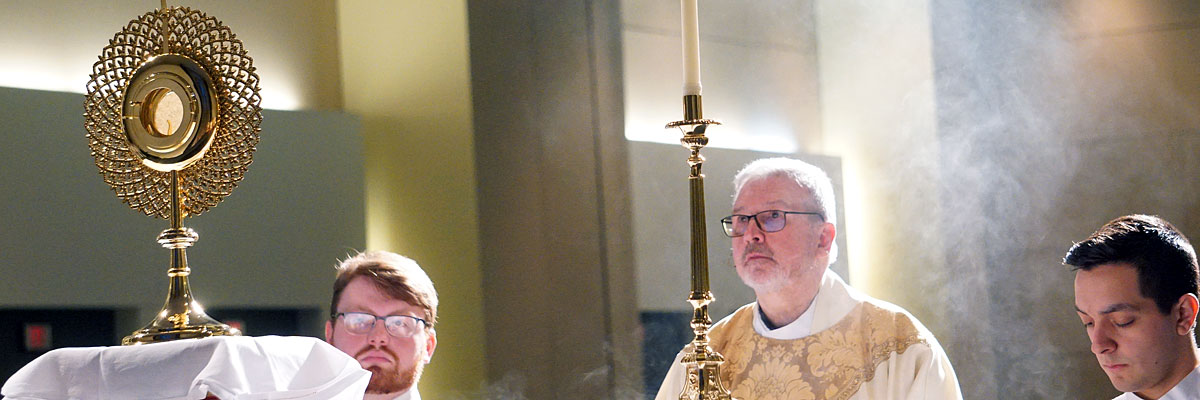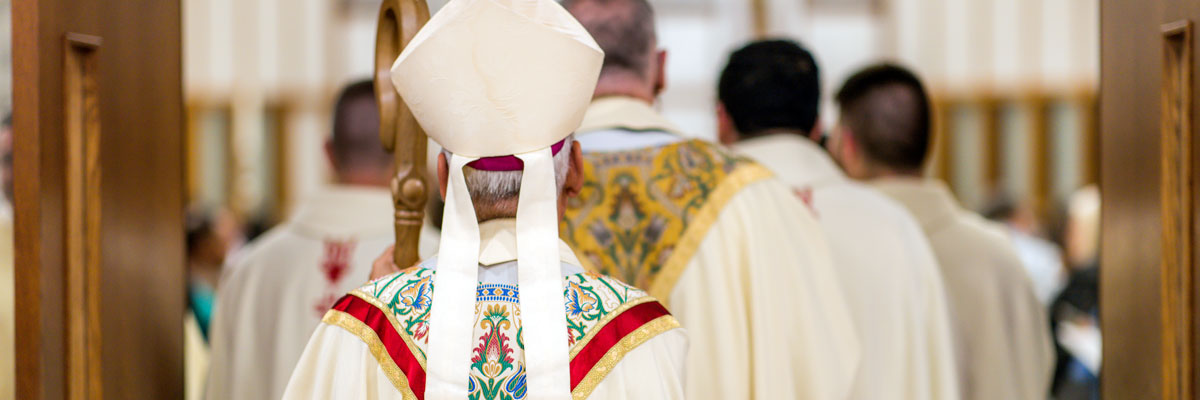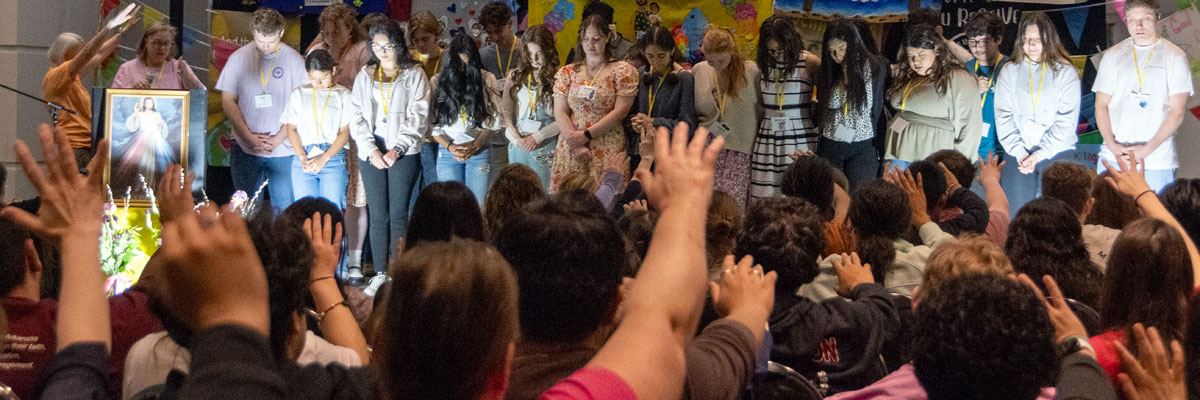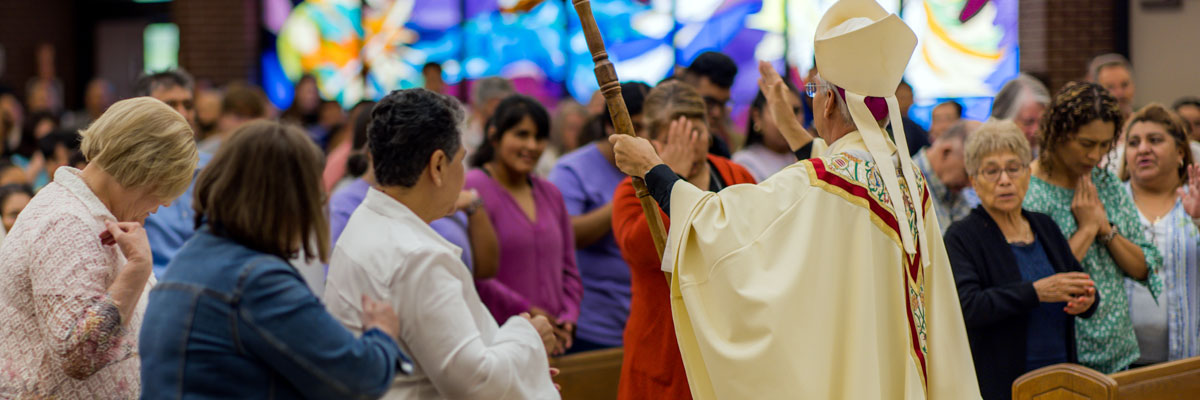Official Website of the
Catholic Diocese of Little Rock
Jesus names Mary mother in his family
Published: February 12, 2011
This is the 11th column in a 13-part series
By Clifford M. Yeary
Associate Director, Little Rock Scripture Study
The Gospels make it clear. There is no question that Jesus came from a fairly large family. The longest single list of his family members is found in Matthew 13:54-56. “He came to his native place and taught the people in their synagogue. They were astonished and said, ‘Where did this man get such wisdom and mighty deeds? Is he not the carpenter’s son? Is not his mother named Mary and his brothers James, Joseph, Simon, and Judas? Are not his sisters all with us?’”
 Catholics and Eastern Orthodox Christians have always believed that Mary, the mother of Jesus, remained a virgin throughout her life, and so discovering that all the Gospels mention Jesus having brothers can be a source of puzzlement (Luke and John never refer to any sisters of Jesus). It is significant that the tradition of Mary’s perpetual virginity was never seen as conflicting with Scripture in the early Church, though there were two different traditions used to explain the nature of Jesus’ and Mary’s kinship to those identified as his brothers and sisters.
Catholics and Eastern Orthodox Christians have always believed that Mary, the mother of Jesus, remained a virgin throughout her life, and so discovering that all the Gospels mention Jesus having brothers can be a source of puzzlement (Luke and John never refer to any sisters of Jesus). It is significant that the tradition of Mary’s perpetual virginity was never seen as conflicting with Scripture in the early Church, though there were two different traditions used to explain the nature of Jesus’ and Mary’s kinship to those identified as his brothers and sisters.
In the Greek-speaking church (the Eastern Orthodox) it was most often claimed that Joseph was a widower when he was betrothed to Mary and that he had children from his previous wife. In a legal sense, this would make these children Jesus’ half brothers or sisters. In the Latin-speaking church, the so-called brothers and sisters of Jesus were understood as actually being his cousins. It is said to have been common in the Jewish culture of the time and place to refer to a cousin as a brother or sister. It is not unheard of today in cultures with a strong clan or patriarchal structure.
While the matter of Jesus’ siblings is often the first concern of Catholics just discovering the references to them in the Bible, the most valuable message we can take from the passages referring to Mary’s and Jesus’ immediate family is one concerning our own call to discipleship. When any of our Gospels characterize Jesus’ relationship to his family, they convey a common message concerning the primary importance of discipleship. Matthew and Mark are the most closely aligned in their treatment of Jesus and his family.
Both Matthew (12:46-50) and Mark (3:31-35) record an incident where Jesus is speaking indoors to a crowd when his family comes to get him, but can’t make their way inside to Jesus because of the crowd. When Jesus is told that his mother and his family are calling for him, he seemingly disavows his relationship to them. As recorded in Mark, Jesus says, “Who are my mother and (my) brothers?” And looking around at those seated in the circle he said, “Here are my mother and my brothers. (For) whoever does the will of God is my brother and sister and mother.”
The message, however, is not that Jesus has rejected his family; it is that the kinship most important to him is the one of spiritual affinity. Those who are obedient to God are Jesus’ brothers and sisters. Luke also records this incident (8:19-21), but Luke, in his infancy narrative (1:26–2:52), has previously devoted a very significant amount of his Gospel to Mary and her obedient response to all that God asks of her. Mary’s response to the angel Gabriel’s announcement that she is to bear a child who is to be called the Son of God is one of humble acceptance.
“Behold, I am the handmaid of the Lord. May it be done to me according to your word.” (Luke 1:38) Mary may well not understand Jesus’ behavior later in life. When Joseph and Mary return to the temple after discovering the adolescent Jesus missing from among their fellow pilgrims returning to Nazareth, it is clear that Mary does not understand why Jesus acts as he does. But her response is a disciple’s response.
Mary, Luke tells us, “kept all these things in her heart.” (Luke 2:51) In John’s Gospel Mary appears in two key episodes. She is with Jesus at the beginning of his ministry, at the wedding at Cana (2:1-12), and at the cross when he dies (19:25-27). It is at the cross, immediately preceding his death, that Jesus gives his mother to his most faithful disciple for them to share a new mother/child relationship. Again, the message seems clear. Jesus’ family is composed of those who are truly his disciples. But not by coincidence, Jesus’ mother is our mother in this new family.
Study Questions
- How do Catholics understand Jesus’ relationship to those called his brothers and sisters in the New Testament?
- How does Luke present Mary as an obedient servant of God?
- Have others, beyond your immediate family, become like brothers or sisters to you? What created that bond?
- What significance does Mary have in your own understanding of the Gospel message?
This article was originally published in Arkansas Catholic Feb. 12, 2011. Copyright Diocese of Little Rock. All rights reserved. This article may be copied or redistributed with acknowledgement and permission of the publisher.









